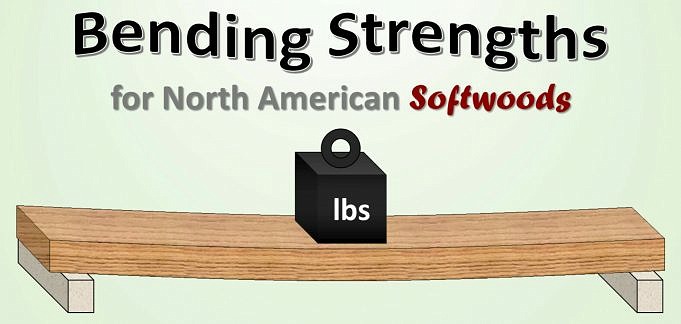Spruce Vs Pine Vs Fir Lumber. Which Wood Is The Best?
Share it
Planning for your wood project is essential, and knowing the different wood types and their characteristics is an advantage. For most projects, the wood species spruce and pine are great raw materials. However, no wood species types are created equal.
To help you choose the right wood, our woodworkers have created this detailed comparison post on spruce vs. pine vs. fir lumber.
Pine, Spruce, And Fir Lumbers Comparison Chart
Pine, Spruce, And Fir: Which Is Which?
These wood types share a common characteristic: the leaves. The leaves of these wood types look like needles or scales, and they produce cones containing seeds.
Both fir and spruce trees are easy to confuse as they both have needle-like leaves attached to their branches. The only difference between spruce and fir trees is their sharply pointed leaves, which can be easily rolled between your fingers.
Although fir and spruce can seem confusing, the former have flattened and soft needles. Furthermore, the leaves of fir trees have light to dark green colors and have a blunt and rounded leaf apex.
The clusters of needle-like leaves found in pines are an indicator that they are different. The red pine group has two clusters, the yellow pine group has three clusters, and the white pine group with five per cluster.
Pines are yellow-colored with striations and dark knots. Pine cones are also produced by this tree, which has a firm and woody exterior.
Is Pine, Spruce And Fir Softwood, Or Hardwood?
Contrary to popular belief spruce and pine are not hardwood trees. They are instead considered softwoods, evergreen, and are therefore not considered hardwood.
Each wood type is assigned a Janka rating, which refers to its hardiness. The wood is harder if it has a higher Janka rating. They are all softwood if you want to compare them in terms of hardiness.
Spruce
These trees are light, rot-resistant and affordable. It is a highly versatile wood and a convenient building raw material. It is straight and has good stiffness. It is a readily available wood and generally inexpensive compared to other wood types.
Spruce wood is also used for making a musical instrument. It is an important raw material for guitars.
Spruce evergreens have different varieties available in the market. Different varieties of spruce have different assigned Janka ratings. Some common spruce wood, like the Black Spruce , has a Janka rating of 520, whereas the Norway spruce has a Janka rating of 380.
Both the pros and cons
This wood is well-known for its soft and light wood characteristics. It also showcases a straight grain.
Due to these qualities, spruce evergreens are utilized especially for a basic woodworking project. Spruce trees grown in the wild have acoustic properties making them suitable for musical instruments.
Despite all these pros, there is a downside to using spruce timber. This wood rots, swells, and burns easily. Spruce trees also split easily when under stress. Thus, this wood type is not recommended outdoors. It is also susceptible to insect attack.
Pine
Pine trees have different varieties that are popular among woodworkers. Furthermore, they are the most ubiquitous species found in the northern hemisphere.
Different Janka ratings are assigned to different pine varieties. Some pine lumber, like Eastern white pine, has a Janka rating of 380. Caribbean pine and Douglas fir have higher ratings.
Woodcarvers and hobbyists love the ponderosa Pine. It’s versatile and easy-to-use. It can be used for interior projects such as cabinet making, furniture, flooring, and framing.
Both the pros and cons
Pine evergreens are usually light and inexpensive. It is able to accept nails easily, unlike other types of wood.
It is also easy to use and can be easily cut, stained, and carved, which greatly reduces the time needed to complete woodworking projects.
Pine timber is beautiful and can be crafted to your specifications. Aside from their beauty, pine trees can be conditioned to resist decay and rot. This type of pine tree is durable even in high foot traffic areas.
Pine evergreens can be damaged, dents and scratches.
Fir
This type includes a variety of soft trees, most of which can be used for construction. Douglas fir is more versatile than other softwoods because of its unique qualities. It can be sourced in large quantities from Europe, South America, and New Zealand.
European fir is easy to work with. The timber is not durable and can easily decay. It can also absorb paint and stain well, which is a plus.
True firs, also known as balsam fir, is one of the most symmetrical of the northeastern coniferous tree species. They are popular, especially during the holidays, since they are utilized as Christmas trees because the needles stay for a longer period of time.
The wood is used for making furniture, plywood, and pulp.
Pros and Cons
These woods are strong and long-lasting. Straight grains are a result of straight tree trunks. Its dense grain quality makes it great for construction. It holds well for the construction of flooring, trim, doors, and windows.
This timber has a major drawback: it’s expensive. It is also not considered a hardwood and is therefore susceptible to damage. It is therefore important to maintain the wood for a long period of time.
Conclusion
Learning the differences between spruce vs pine vs fir lumber is definitely an advantage when it comes to choosing wood for your project. These wood species can be used to finish any project, no matter how large or small.
Basic construction projects require specific wood types or a mix of softwoods and hardwoods.



